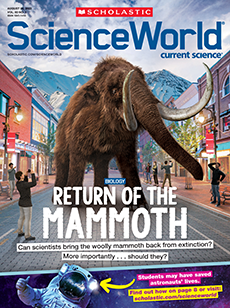Every so often, silent ripples from space pass through Earth. These gravitational waves occur when massive objects, like dying stars, collide. Such cosmic crashes shake and distort the very fabric of space and time. The resulting waves can travel long distances—all the way to our planet. Scientists had long hypothesized that these mysterious ripples existed. But it wasn’t until 2015 that they were actually able to sense them—with the help of two giant detectors.
Corey Gray helped build one of those detectors, in Hanford, Washington. A twin detector is located in Livingston, Louisiana. Together, they make up the Laser Interferometer Gravitational-Wave Observatory (LIGO). Gray is now a detector operator at LIGO.
